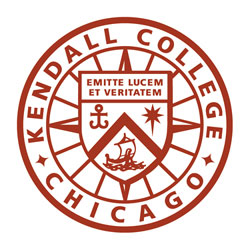Kendall College School of Hospitality Management, ranked the No. 1 program in Chicago for preparing students for hospitality careers, has released its first-ever trends outlook for the hospitality industry in 2014.
1. Global Going Strong: International Knowledge in Demand
According to the World Travel & Tourism Council, the Travel and Tourism industry is currently among the largest and fastest-growing industries worldwide, forecasted to support 328 million jobs, or 10 percent of the workforce, by 2022.1 A top 10 industry in the U.S., Travel and Tourism provides one out of eight jobs, with that number increasing at an exponential rate, adding approximately 55,000 jobs per month in 2013.
Specifically, with the U.S. a global travel hub, forecasting nearly a 30 percent increase in international arrivals through 2018, and Chicago already reaching 65 percent of the mayor’s goal of 50 million visitors by 2020 in just two years, Kendall suggests the number one trend is International Knowledge in Demand.Not only is a global, real-world perspective incorporated into the Kendall curriculum, but as part of their training, Kendall students can earn a Glion Advanced Certificate in International Hospitality Management, giving them a unique multi-cultural perspective as well as a highly-respected international credential to help compete in an increasingly global marketplace.
2. Rankings Mean Business
Never has a user-generated online rating meant as much as it does now. The 21st Century is the age of digital referrals, and the power of what’s posted on the web via user-generated review sites ” digital word of mouth ” can drastically impact a business’ revenue. There are 3.3 billion brand mentions in 2.4 billion brand-related conversations within the U.S. every day, and the typical American mentions brand names 60 times per week in online and offline conversations.
According to the 2012 Luxury Trend report, more than 33 percent of its customers consider TripAdvisor reviews to be extremely important.
3. Back At The Bar ” Traditional Gets A Twist
What’s currently on tap? Classic is the new contemporary, with bars serving up a renaissance of classic and pre-prohibition cocktails, Vermouth a big hit. And one of the most classic beverages, tea, is giving cocktails a makeover. With its broad range of appealing flavor profiles and vibrant spectrum of visual characteristics, tea is being elevated to a contemporary status as mixologists and spirit bars across the country are using it to enhance their gin, rum and vodka based cocktails. Whether it is incorporating a floral hibiscus tea to gin or a smoky lapsang souchong tea to vodka, they can add interesting subtle or assertive dimension as a complimentary ingredient. Tea offers adaptability to cold or hot and savory or sweet cocktails making it more user-friendly and appealing to a wider audience in the market place.
Go sweet:on sour beers. A traditional method of beer making from Belgium and Germany is making a comeback. The sour element comes from the wild yeasts and natural bacterias that caused beers to taste funky prior to the advent of refrigeration. Modern brewers have learned to control this process better and the resulting beers provide intriguing flavors for the adventuresome beer drinker. These high-acid beers are great for pairing with food but less desirable for quenching your thirst alone on a hot day. Many restaurants have added sour beers to their beer lists and, with their high acidity content, chefs are happily pairing them with food like Carolina BBQ, vinaigrette dressings, deep friend cheese curds, Tex- Mex chili or New Orleans gumbo, to name a few.
4. Sustainability is The New Standard
In the U.S. alone, hotels represent more than five billion square feet of space, nearly five million guest rooms and close to $4 billion in annual energy use, according to the U.S. Green Building Council. That’s a big impact the industry can make and has made on the environment, in an effort to make sustainability the new standard and better appeal to environmentally conscious business and leisure travelers. In fact, 2013 marks the tipping point for sustainable hospitality, with eco-friendly practices becoming the norm, rather than the exception, so expect 2014 to see standard green practices, products, programs and packages. The message that sustainable practices can save money for a hotel operation has come through loud and clear. According to research released earlier this year by Travel Advisor10, 58 percent of travelers said that they would either not pay more or expect to pay less, nearly two-thirds (62 percent) of travelers expect hotels to have some type of environmental program in place and the majority (84 percent) do not see these practices as having a negative impact on comfort or luxury. The survey found that only 17 percent of travelers would be willing to pay more for eco-features.
5. Room Service Reinvented
With room service revenue drastically decreasing ” and some hotels like The New York Hilton who are forgoing the amenity later this year ” the majority of hotels are dedicated to reinventing the concept, contributing to an eight percent increase in the number of hotels offering room service from 2011-2012. What’s hot? Well known chef names, concept-driven restaurants and artfully crafted menu items to digital in-room dining menus and online ordering to brown-bag meal deliveries. Hotel Belmont in Dallas enlisted Chef Tim Byres, voted best southwestern chef by Food & Wine to head up Smoke, a barbecue restaurant with an emphasis on smoked and cured items. And, Omni Chicago Hotel in Chicago is offers a digital in-room dining menu, which includes pictures and descriptions of each meal. The term at your service will continue to evolve to support consumer needs for simple, fast and quality service ” room service isn’t going away anytime soon.
Posted by Lauren Harrity 10/25/13















